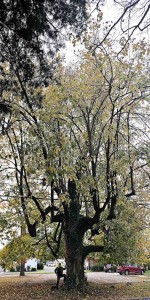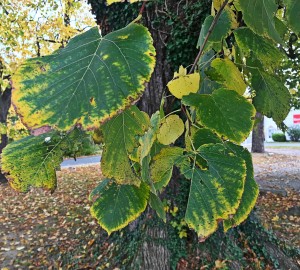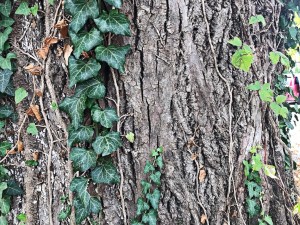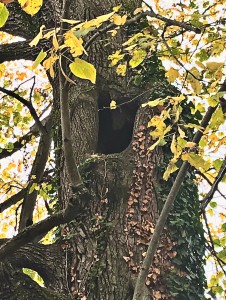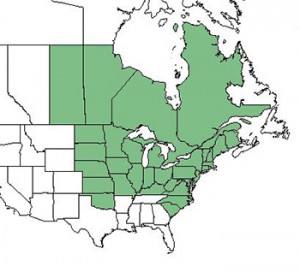Some evening when you are walking near the Lovettsville Town Council, right across from Andy’s Restaurant, look up and observe a natural beauty, about 100 feet or more high, and take a pix of a friend standing next to it, to save some record of its majestic proportions.
If you look on the ground toward the north of the tree, on the same side of the street, you can see its younger offspring already climbing to the sky.
The means to identify a tree for expert and amateur alike is to study the leaves, the bark, the twigs, and the fruit.
The leaves are often the first and most reliable indicator.
This tree has leaves with a large ovate-rounded crown, plainly deciduous, cordate and regularly toothed at the edges.
While there are similar leaves on other tree specimens, our best choice is that this tree is from the linden family, formally titled Tilia Americana, and more commonly known as American basswood.
The bark, when compared with other trees, is of the basswood nature.
Trees have a heartwood, the tree within, that woodpeckers and other wildlife may excavate.
It’s not surprising to see a series of openings, borings, bird size entrances to the heart wood, made most ordinarily by, say, a pileated woodpecker and its offspring.
There is a remarkable opening at a mid-height position on this tree. It looks large enough to house a small bear or possum. (Of course, it might be the equivalent of a “coffee bar” for a whole flock of woodpeckers.)
This is a tree found across the nation from the Northeast to the west and into Canada.
This tree is of itself a study in silviculture. The branching habit and resulting shape of a tree is influenced by age and factors of the environment. The arms of this tree are lifted up high to the sky like a celebrant crowd. The light and smaller limbs lend an art to the vision.
The water and soil determine its health. This tree, however, has been shown to be tolerant of most soil types, to require little water, to be quite resilient, and thus to thrive even in urban settings.
When this tree is in full bloom, watch out for bees who may visit in abundant numbers. Honey from the nectar of these flowers is a prized gourmet item.
Its light wood is suited to making rope and mats, also furniture, crates, boxes and veneer.
We walk past trees all the time and have some vague sense, despite the fact there’s so much going on in our lives, that, there is some interdependence, some community, with nature, and with trees that, at the least, give us air to breathe.
This a short review of one of many trees worth a second glance.
Of course, this is the fall when we are thinking about the brilliant Fall maple trees.
But that’s another story.

